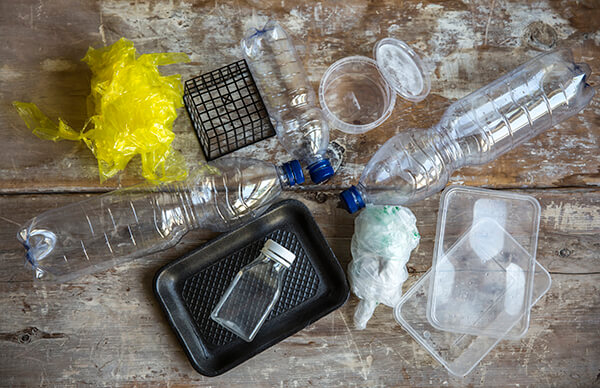A large part of New Zealand’s popularity as a country is tied to its image of being ‘clean and green’. Awe-inspiring photos circulate the internet of our beautiful countryside, with lush, green forests and native bush, and endless stretches of crystal-clear water. While maintaining this image is undeniably vital to our ongoing success as a tourist destination, it’s the voice of our local communities that speak the loudest message about sustainability.
All New Zealand cities and towns have introduced recycling schemes to reduce waste going into our landfills – the amount of which is staggering. It was reported that 3.2 million tonnes of waste was sent to municipal landfills in 2006, and the 2018 figure for Auckland alone reaches 200,000 tonnes – so what can we do to reduce the figure and keep our country beautiful?
The increase of plastic packaging recycling in NZ
According to Statistics NZ, since 2006, 97 per cent of New Zealanders have had access to either kerbside or drop-off recycling services, a figure that increased by 73 per cent from 1996. However, this places much of the responsibility on the individual, and the same report indicates 65 per cent of all Auckland’s landfill rubbish could be put to better use.
For a commercial business, the question should no longer why we should recycle, but how we can recycle responsibly. The good news is that recycling responsibly doesn’t mean a loss of profit. There is substantial value in commercial recycling for a business of all code 1, 2, and 4 products. In the last few decades alone, New Zealand businesses have made significant improvements to their recycling habits – the percentage of packaging waste recycled increased from under 30 per cent in 1994 to 60 per cent in 2007. Now, we face a greater threat: New Zealand previously shipped millions of kilograms of waste to Chinese processing plants. However, with China recently introducing a total ban on more than 20 types of foreign waste, we now have to look for other buyers or risk an increase of recyclable products in landfill on our home soil.
The essentials of plastic recycling
Plastic recycling – and sustainable plastic packaging – needn’t be a strain on a company’s resources. In fact, with a simple guide and a little vigilance, you can make both your packaging and your company as clean and green as our countryside. Below, we’ve listed some information about recycling code 1, 2, and 4 products.
- Code 1 – RPET – Recycled Polyethylene Terephthalate
- Code 1 – PET – Polyethylene Terephthalate
- Code 2 – HDPE – High Density Polyethylene
- Code 4 – LDPE – Low Density Polyethylene / LLDPE – Linear Low Density Polyethylene
Characteristics: The recycling process produces consistent, pure quality of recycled plastic. Safe, clean and eco-friendly, it requires less energy to manufacture products made out of recycled plastic.
Common Uses: Food packaging, water bottles, textiles, sleeping bags, upholstery foams, industrial strapping and carpets.
Recycled into: RPET (Code 1)
Characteristics: Clear, tough, solvent resistant, barrier to gas and moisture, softens at 70°C – 100% virgin (no RPET content)
Common Uses: Salad domes, biscuit trays, soft drink and water bottles, salad dressing and peanut butter containers, fleece clothing and geotextiles.
Recycled into: RPET
Characteristics: Hard to semi-flexible, resistant to chemicals and moisture, waxy surface, opaque, softens at 135°C, easily coloured, processed and formed.
Common Uses: Crinkly shopping bags, freezer bags, milk bottles, ice cream containers, juice bottles, shampoo, chemical and detergent bottles, buckets, rigid agricultural pipe, milk crates.
Recycled in: Recycling bins, compost bins, buckets, detergent containers, posts, fencing, pipes.
Characteristics: Soft, flexible, waxy surface, translucent, softens at 80°C, scratches easily.
Common Uses: Cling wrap, rubbish bags, squeeze bottles, black irrigation tube, black mulch film, rubbish bins, shrink wrap.
Recycled in: Rubbish bin liners, pallet sheets, slip sheets.
For a full list of all recycling codes and packaging recycling information, view our guide to recyclable plastics.
Custom-Pak: responsible food packaging NZ wide
Custom-Pak offers a range of plastic packaging solutions that balance quality and efficiency with environmental friendliness. If you need packaging that protects your products, prolongs their shelf-life and presents them attractively to consumers, talk to our team today. We have a wide range of standard shapes and sizes, plus we can design and custom-make a pack just for you. With manufacturing plants in both the North and South Island of New Zealand, we can usually deliver your orders in just two days. To learn more about how we’re changing the world of food packaging in NZ, and to do your part in keeping our country beautiful, contact Custom-Pak today.
Sources and citations:
https://www.nzherald.co.nz/nz/news/article.cfm?c_id=1&objectid=11957595
https://www.nzherald.co.nz/nz/news/article.cfm?c_id=1&objectid=12062016
http://www.recycle.co.nz/problemsize.php
http://archive.stats.govt.nz/browse_for_stats/snapshots-of-nz/Measuring-NZ-progress-sustainable-dev-%20approach/sustainable-development/waste.aspx

